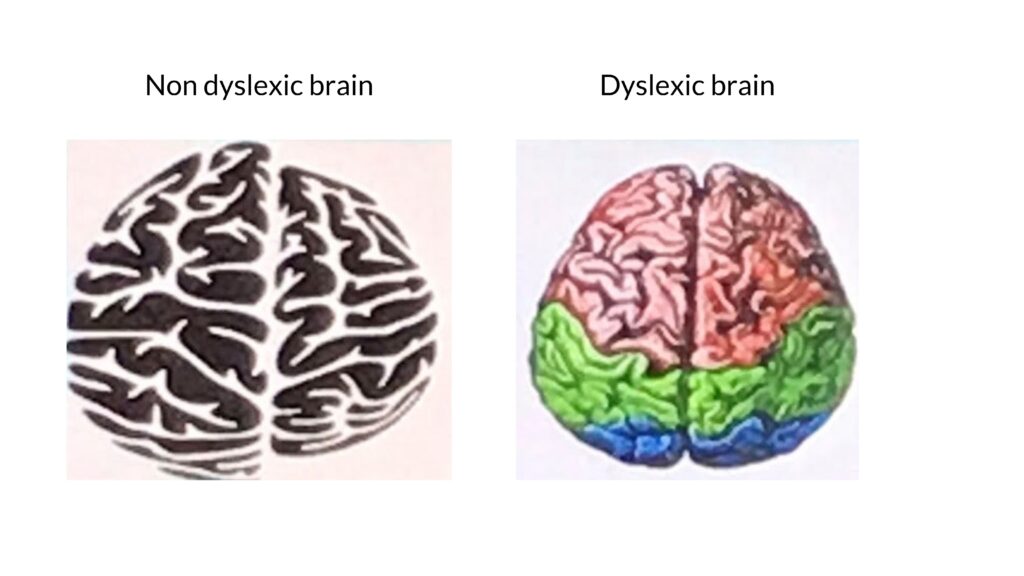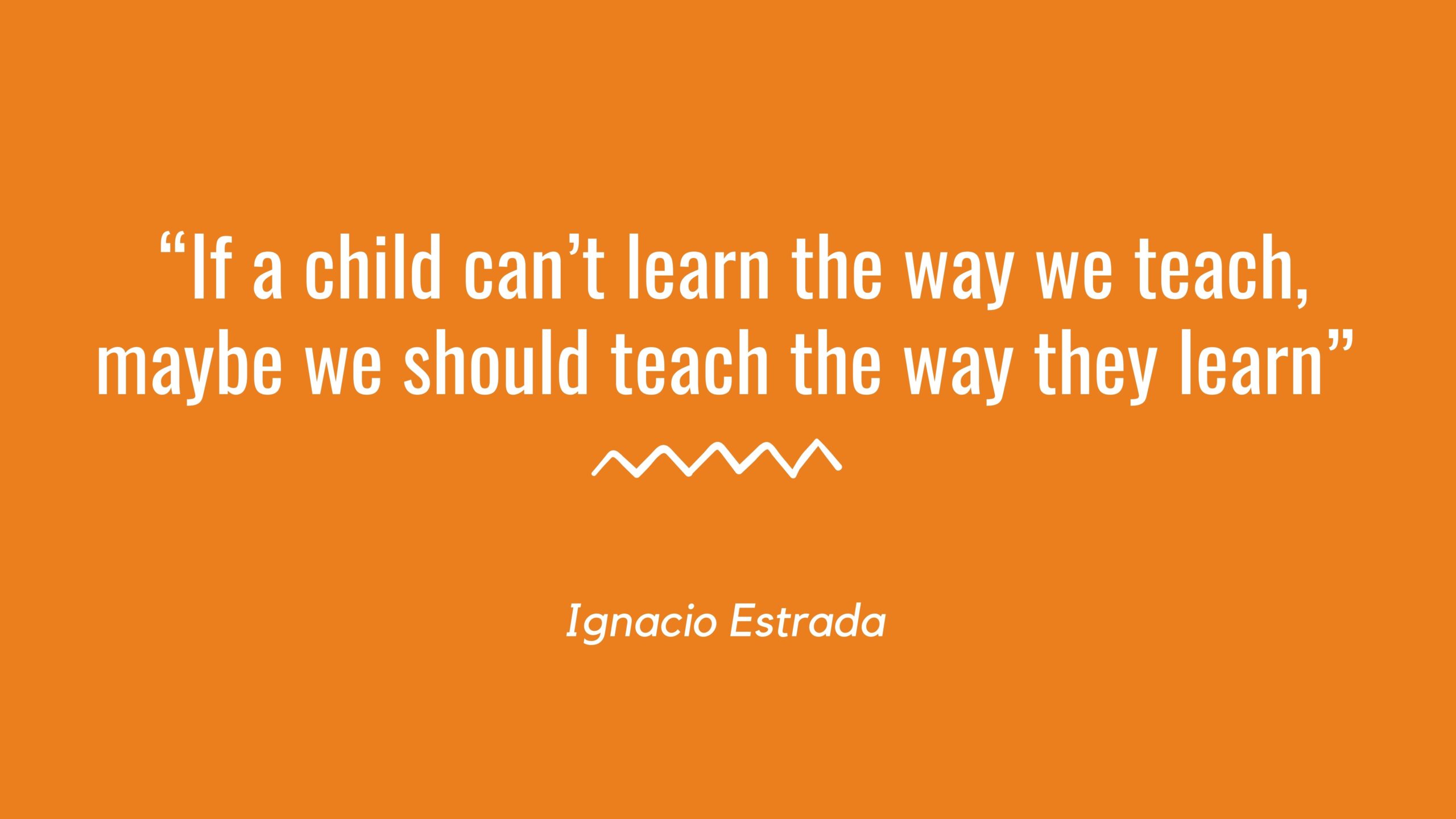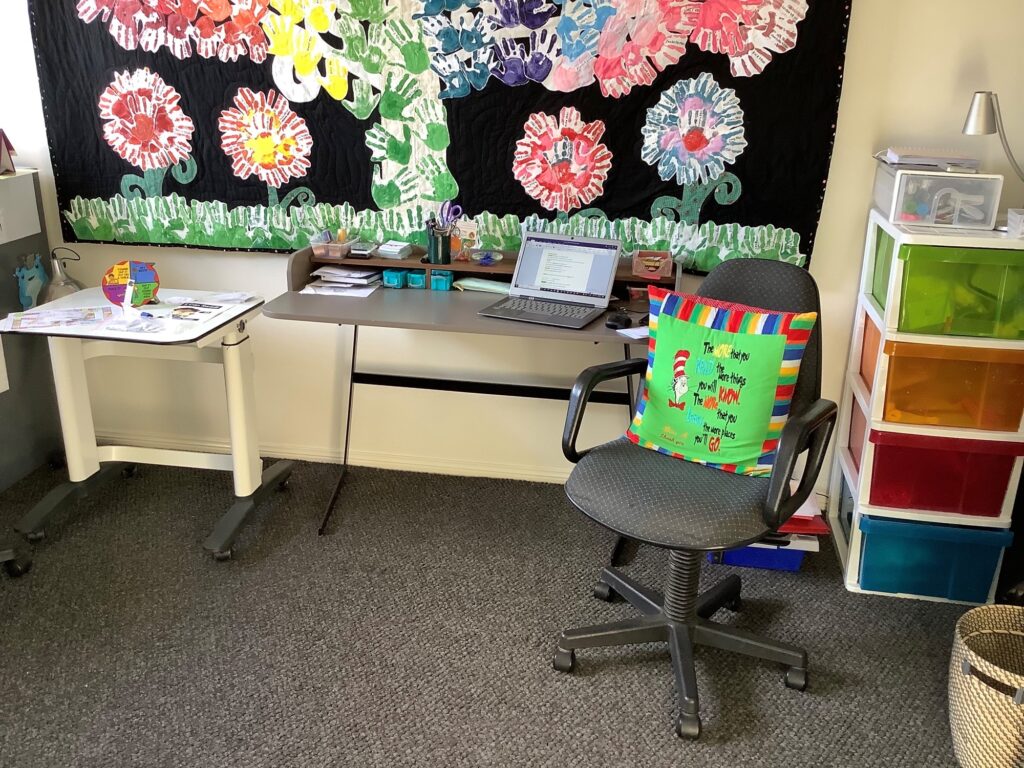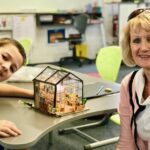No two children learn the same way or at the same pace, we want our children to progress as quickly as they are able, but take the time to learn the foundations on which to build literacy development in a sequential way.

Research indicates that the dyslexic brain is physically different from the neurotypical brain.
The left side of the brain is associated with processing language for most people.
The dyslexic brain is perfectly symmetrical and processes language by activating areas of the right brain and very little of the left.
As a result, it makes sense that children with dyslexia need a different and more multisensory approach to learning.

All human beings learn through the visual, auditory and kinaesthetic channels of the brain, Research findings in the field of cognitive science have identified that children with dyslexia can learn to read, spell and write using a cognitive, language based, direct, explicit, structured and systematic approach such as multi-sensory structured language known as MSL.
My instruction will always include visual, kinaesthetic, and auditory activities to enhance learning and memory. Links are consistently made between the visual (what we see) auditory (what we hear) and the kinaesthetic tactile (what we feel).
The most effective way of teaching is to integrate ALL THREE AT ONE TIME when possible. This allows the pathways in our learners’ brains to make connections they otherwise might not make if we’re just teaching one way. This type of instruction strengthens students sensory pathways and enables them to retain and utilise information.
Learning to read isn’t just about knowing letters. Sure, that’s a part of it. But learners need to be able to connect letters with letter sounds through phonemic awareness. Phonology is the basis of my instruction. (the study of speech sounds in language and the rules that govern their pronunciation. My lessons are based on the OG and MSL approach with explicit and direct instruction tailor made for each individual student and their personal needs.

The Orton-Gillingham approach is the result of neurologist Samuel Orton and gifted education and psychologist Anna Gillingham. Both of these educators noticed that bright children sometimes failed to read in a traditional classroom and now after decades of research, their approach is highly regarded as the OG approach to learning. It is evidence based focusing on content and how it is taught.
My goal
My ultimate goal is to provide encouragement by way of hands-on learning activities so that every student develops self-worth and confidence in their own way of learning.
My passion is helping struggling learners in all areas. I typically stay within the topics of reading, writing, spelling, vocabulary, comprehension, and phonics.
I will encourage each learner and build on their individual strengths and will design lessons on an individual basis according to the needs presented.
Lessons can be conducted at times suitable to your schedules, before school, after school and during school hours. Ideally, each lesson should be an hour in duration but that could be dependent on the concentration levels of the individual. Students will be assessed on their individual needs.
I am conveniently located in a quiet area of Lennox Head. My studio is private and welcoming with no distractions during the tuition time.
Parents are welcome to attend each lesson or wait in a convenient outdoor location if desired.

My little boy had suspected dyslexia, we tried several tutors and had no success, I ended up home schooling him for 6 months. We made some progress, but I was really worried about sending him back to school, into an environment that was so fixed and structured, he’s a creative boy and learns in a different way to others.
We were lucky enough to have Elma as his year 3 teacher, and for the first time ever he enjoyed going to school, kept up in class, thrived and progressed. I used to joke with Elma that I wish she would stop being a teacher and become a tutor, so she could continue to teach my son for as long as we needed, not just a single year.
If your child is struggling with learning, please talk to Elma, her approach is different to any other educator that I’ve worked with. She’s kind and patient and will find a way to engage your child, teaching them in a style that suits them using topics that interest them and give them back their passion for learning.
